Comprehensive Report on Islamic Banking Principles and Practices
VerifiedAdded on 2020/03/04
|8
|968
|51
Report
AI Summary
This report offers a comprehensive exploration of Islamic banking principles and practices. It begins by outlining various types of Islamic banking, such as participatory modes like Mudarabah and Musharakha, sales modes like Murabahah and Istisna, and rent-based modes including Ijarah. The report then delves into Islamic laws governing trading, emphasizing the importance of Sharia compliance and the prohibition of usury (riba), gharar (uncertainty), and unlawful goods. Furthermore, the report provides a list of prominent Islamic bankers worldwide, including major institutions like Abu Dhabi Islamic Bank and Al Rajhi Bank. Finally, the report provides a list of references used to compile the report.
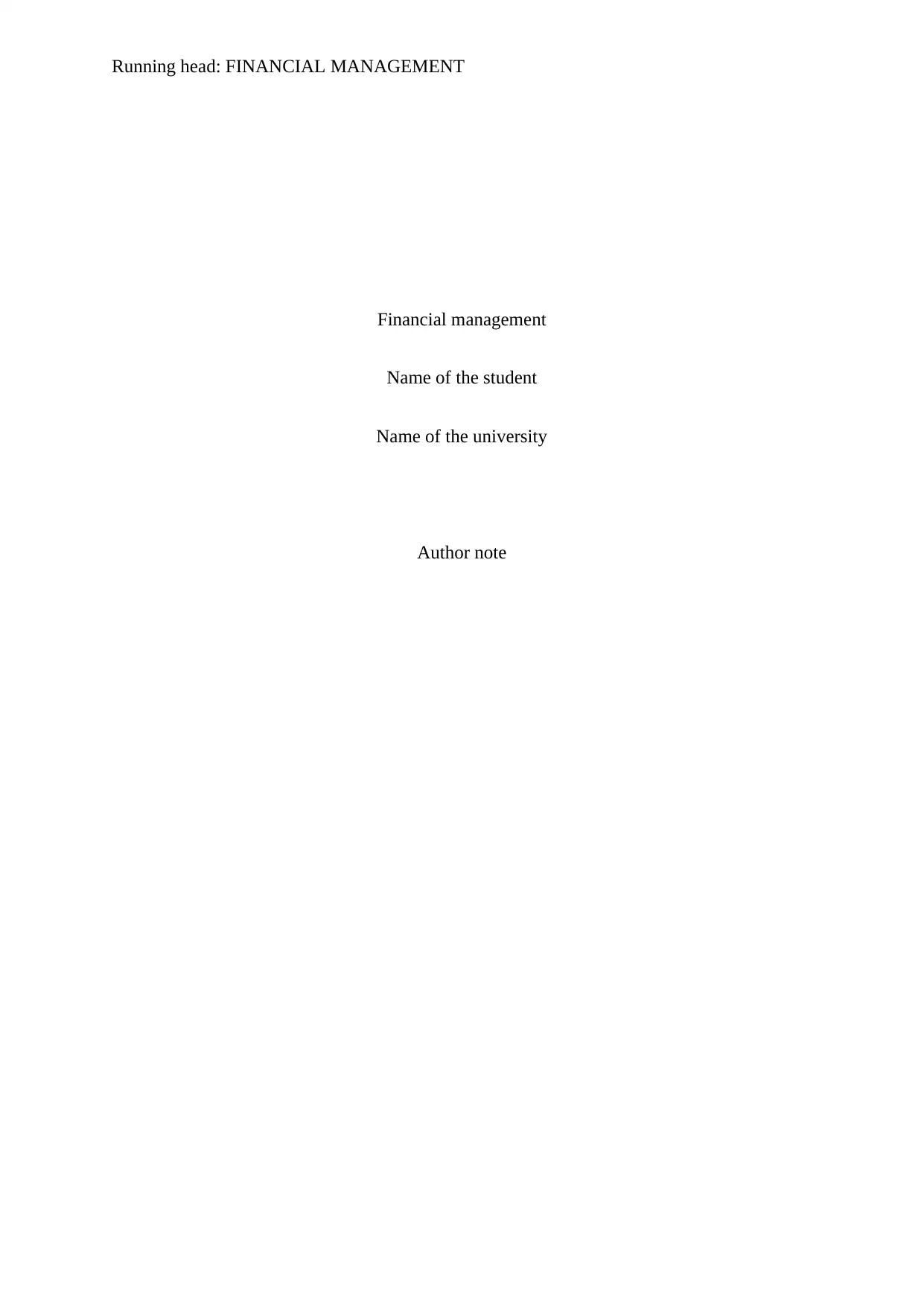
Running head: FINANCIAL MANAGEMENT
Financial management
Name of the student
Name of the university
Author note
Financial management
Name of the student
Name of the university
Author note
Paraphrase This Document
Need a fresh take? Get an instant paraphrase of this document with our AI Paraphraser
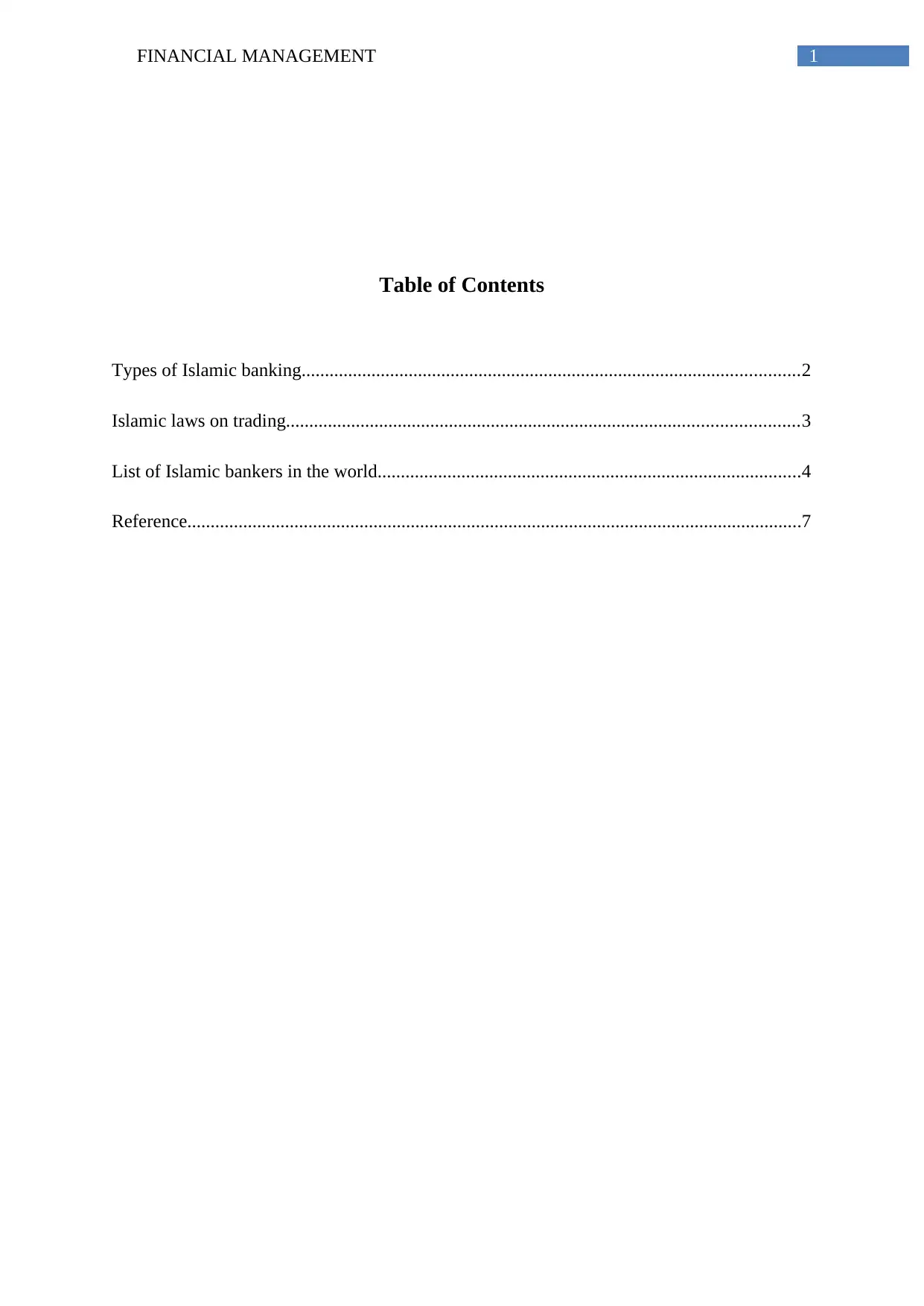
1FINANCIAL MANAGEMENT
Table of Contents
Types of Islamic banking...........................................................................................................2
Islamic laws on trading..............................................................................................................3
List of Islamic bankers in the world...........................................................................................4
Reference....................................................................................................................................7
Table of Contents
Types of Islamic banking...........................................................................................................2
Islamic laws on trading..............................................................................................................3
List of Islamic bankers in the world...........................................................................................4
Reference....................................................................................................................................7
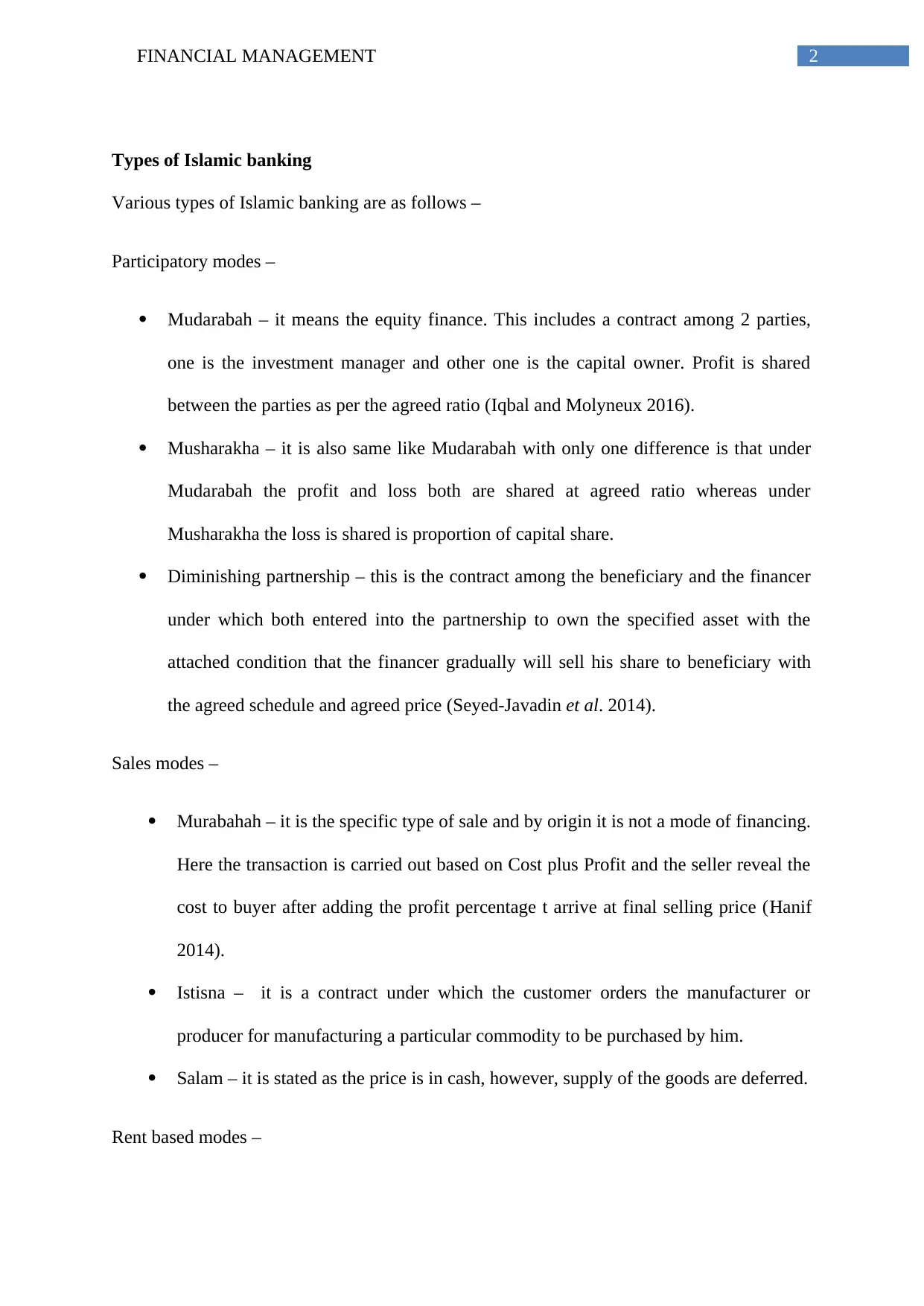
2FINANCIAL MANAGEMENT
Types of Islamic banking
Various types of Islamic banking are as follows –
Participatory modes –
Mudarabah – it means the equity finance. This includes a contract among 2 parties,
one is the investment manager and other one is the capital owner. Profit is shared
between the parties as per the agreed ratio (Iqbal and Molyneux 2016).
Musharakha – it is also same like Mudarabah with only one difference is that under
Mudarabah the profit and loss both are shared at agreed ratio whereas under
Musharakha the loss is shared is proportion of capital share.
Diminishing partnership – this is the contract among the beneficiary and the financer
under which both entered into the partnership to own the specified asset with the
attached condition that the financer gradually will sell his share to beneficiary with
the agreed schedule and agreed price (Seyed-Javadin et al. 2014).
Sales modes –
Murabahah – it is the specific type of sale and by origin it is not a mode of financing.
Here the transaction is carried out based on Cost plus Profit and the seller reveal the
cost to buyer after adding the profit percentage t arrive at final selling price (Hanif
2014).
Istisna – it is a contract under which the customer orders the manufacturer or
producer for manufacturing a particular commodity to be purchased by him.
Salam – it is stated as the price is in cash, however, supply of the goods are deferred.
Rent based modes –
Types of Islamic banking
Various types of Islamic banking are as follows –
Participatory modes –
Mudarabah – it means the equity finance. This includes a contract among 2 parties,
one is the investment manager and other one is the capital owner. Profit is shared
between the parties as per the agreed ratio (Iqbal and Molyneux 2016).
Musharakha – it is also same like Mudarabah with only one difference is that under
Mudarabah the profit and loss both are shared at agreed ratio whereas under
Musharakha the loss is shared is proportion of capital share.
Diminishing partnership – this is the contract among the beneficiary and the financer
under which both entered into the partnership to own the specified asset with the
attached condition that the financer gradually will sell his share to beneficiary with
the agreed schedule and agreed price (Seyed-Javadin et al. 2014).
Sales modes –
Murabahah – it is the specific type of sale and by origin it is not a mode of financing.
Here the transaction is carried out based on Cost plus Profit and the seller reveal the
cost to buyer after adding the profit percentage t arrive at final selling price (Hanif
2014).
Istisna – it is a contract under which the customer orders the manufacturer or
producer for manufacturing a particular commodity to be purchased by him.
Salam – it is stated as the price is in cash, however, supply of the goods are deferred.
Rent based modes –
⊘ This is a preview!⊘
Do you want full access?
Subscribe today to unlock all pages.

Trusted by 1+ million students worldwide
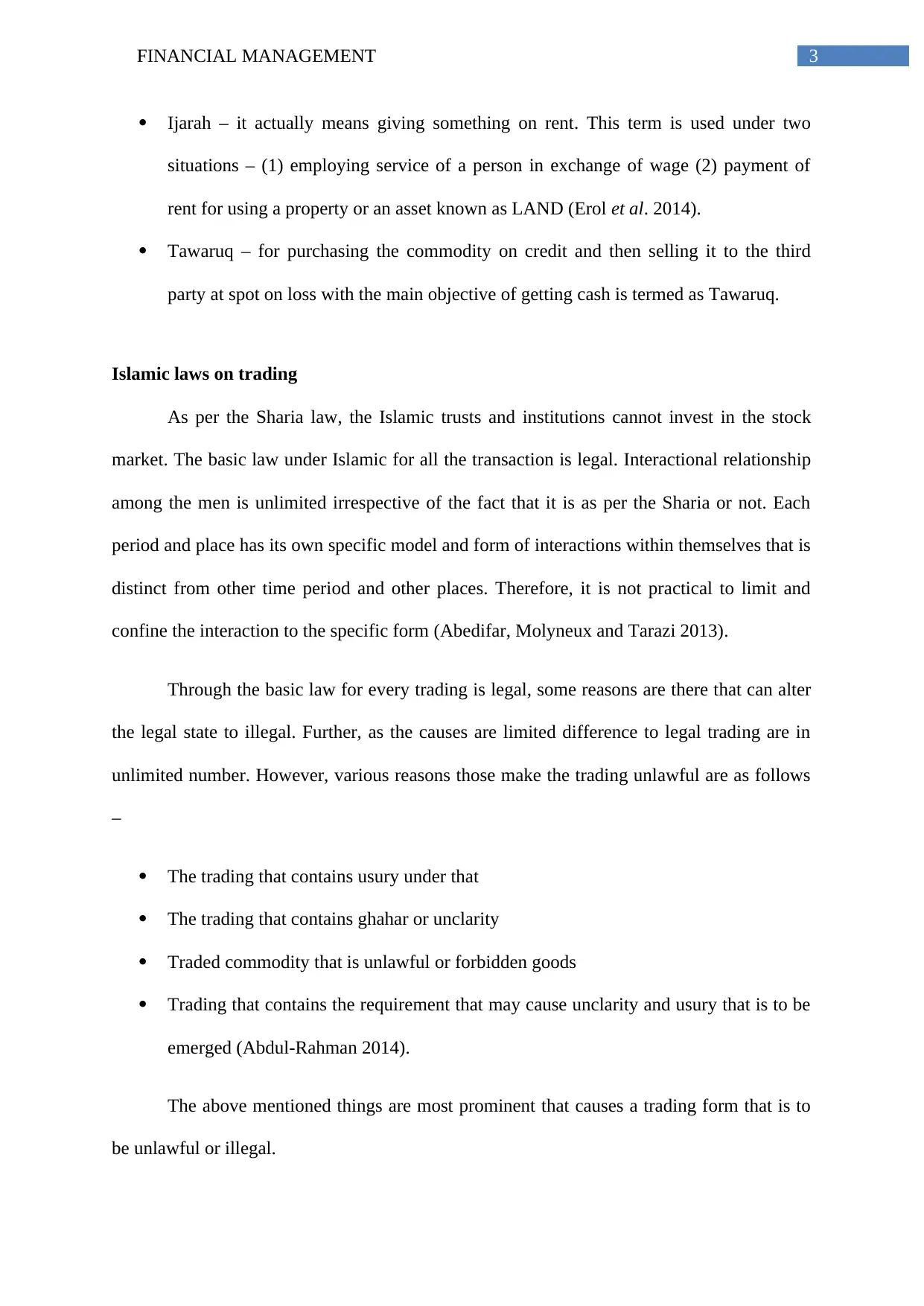
3FINANCIAL MANAGEMENT
Ijarah – it actually means giving something on rent. This term is used under two
situations – (1) employing service of a person in exchange of wage (2) payment of
rent for using a property or an asset known as LAND (Erol et al. 2014).
Tawaruq – for purchasing the commodity on credit and then selling it to the third
party at spot on loss with the main objective of getting cash is termed as Tawaruq.
Islamic laws on trading
As per the Sharia law, the Islamic trusts and institutions cannot invest in the stock
market. The basic law under Islamic for all the transaction is legal. Interactional relationship
among the men is unlimited irrespective of the fact that it is as per the Sharia or not. Each
period and place has its own specific model and form of interactions within themselves that is
distinct from other time period and other places. Therefore, it is not practical to limit and
confine the interaction to the specific form (Abedifar, Molyneux and Tarazi 2013).
Through the basic law for every trading is legal, some reasons are there that can alter
the legal state to illegal. Further, as the causes are limited difference to legal trading are in
unlimited number. However, various reasons those make the trading unlawful are as follows
–
The trading that contains usury under that
The trading that contains ghahar or unclarity
Traded commodity that is unlawful or forbidden goods
Trading that contains the requirement that may cause unclarity and usury that is to be
emerged (Abdul-Rahman 2014).
The above mentioned things are most prominent that causes a trading form that is to
be unlawful or illegal.
Ijarah – it actually means giving something on rent. This term is used under two
situations – (1) employing service of a person in exchange of wage (2) payment of
rent for using a property or an asset known as LAND (Erol et al. 2014).
Tawaruq – for purchasing the commodity on credit and then selling it to the third
party at spot on loss with the main objective of getting cash is termed as Tawaruq.
Islamic laws on trading
As per the Sharia law, the Islamic trusts and institutions cannot invest in the stock
market. The basic law under Islamic for all the transaction is legal. Interactional relationship
among the men is unlimited irrespective of the fact that it is as per the Sharia or not. Each
period and place has its own specific model and form of interactions within themselves that is
distinct from other time period and other places. Therefore, it is not practical to limit and
confine the interaction to the specific form (Abedifar, Molyneux and Tarazi 2013).
Through the basic law for every trading is legal, some reasons are there that can alter
the legal state to illegal. Further, as the causes are limited difference to legal trading are in
unlimited number. However, various reasons those make the trading unlawful are as follows
–
The trading that contains usury under that
The trading that contains ghahar or unclarity
Traded commodity that is unlawful or forbidden goods
Trading that contains the requirement that may cause unclarity and usury that is to be
emerged (Abdul-Rahman 2014).
The above mentioned things are most prominent that causes a trading form that is to
be unlawful or illegal.
Paraphrase This Document
Need a fresh take? Get an instant paraphrase of this document with our AI Paraphraser
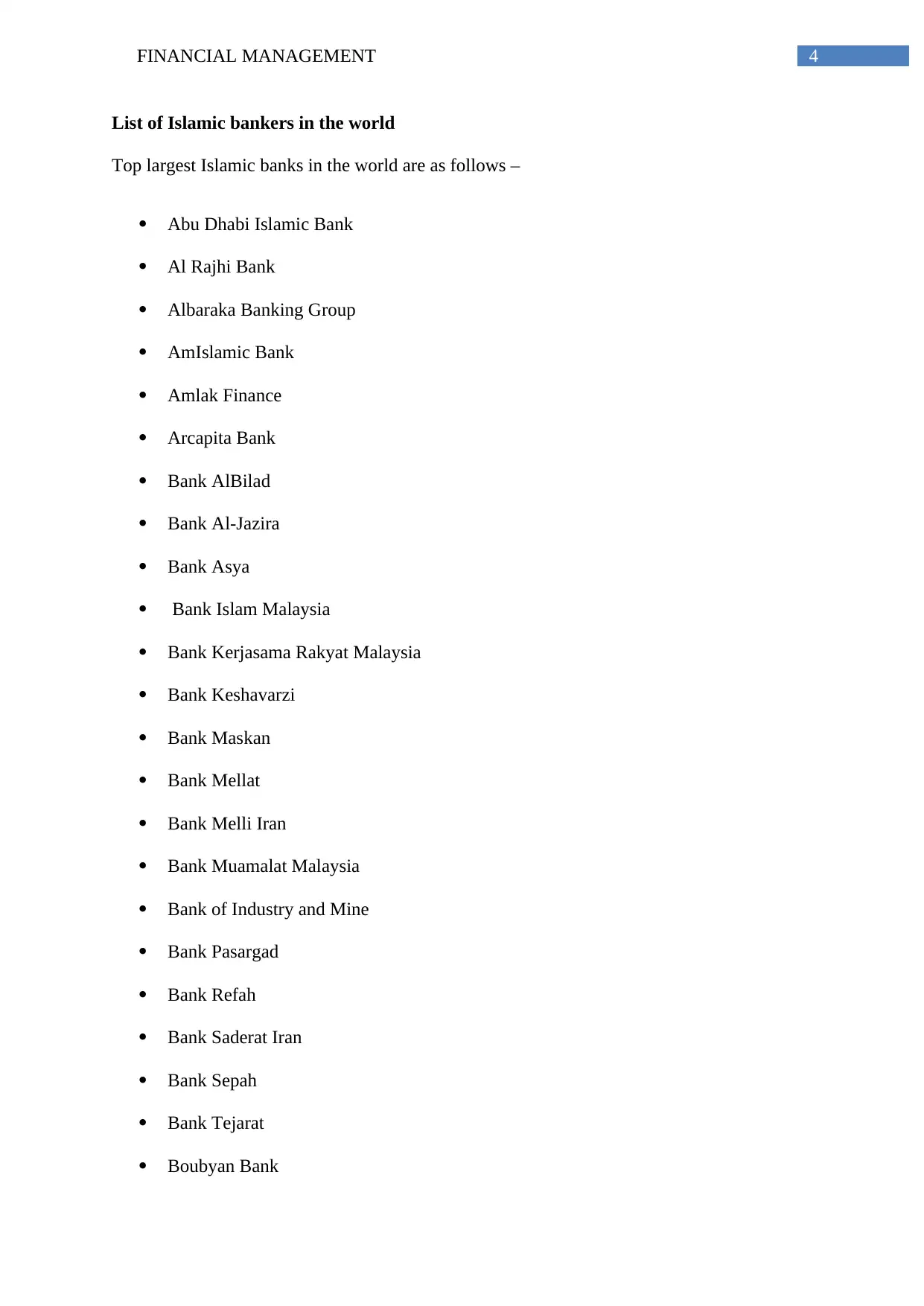
4FINANCIAL MANAGEMENT
List of Islamic bankers in the world
Top largest Islamic banks in the world are as follows –
Abu Dhabi Islamic Bank
Al Rajhi Bank
Albaraka Banking Group
AmIslamic Bank
Amlak Finance
Arcapita Bank
Bank AlBilad
Bank Al-Jazira
Bank Asya
Bank Islam Malaysia
Bank Kerjasama Rakyat Malaysia
Bank Keshavarzi
Bank Maskan
Bank Mellat
Bank Melli Iran
Bank Muamalat Malaysia
Bank of Industry and Mine
Bank Pasargad
Bank Refah
Bank Saderat Iran
Bank Sepah
Bank Tejarat
Boubyan Bank
List of Islamic bankers in the world
Top largest Islamic banks in the world are as follows –
Abu Dhabi Islamic Bank
Al Rajhi Bank
Albaraka Banking Group
AmIslamic Bank
Amlak Finance
Arcapita Bank
Bank AlBilad
Bank Al-Jazira
Bank Asya
Bank Islam Malaysia
Bank Kerjasama Rakyat Malaysia
Bank Keshavarzi
Bank Maskan
Bank Mellat
Bank Melli Iran
Bank Muamalat Malaysia
Bank of Industry and Mine
Bank Pasargad
Bank Refah
Bank Saderat Iran
Bank Sepah
Bank Tejarat
Boubyan Bank
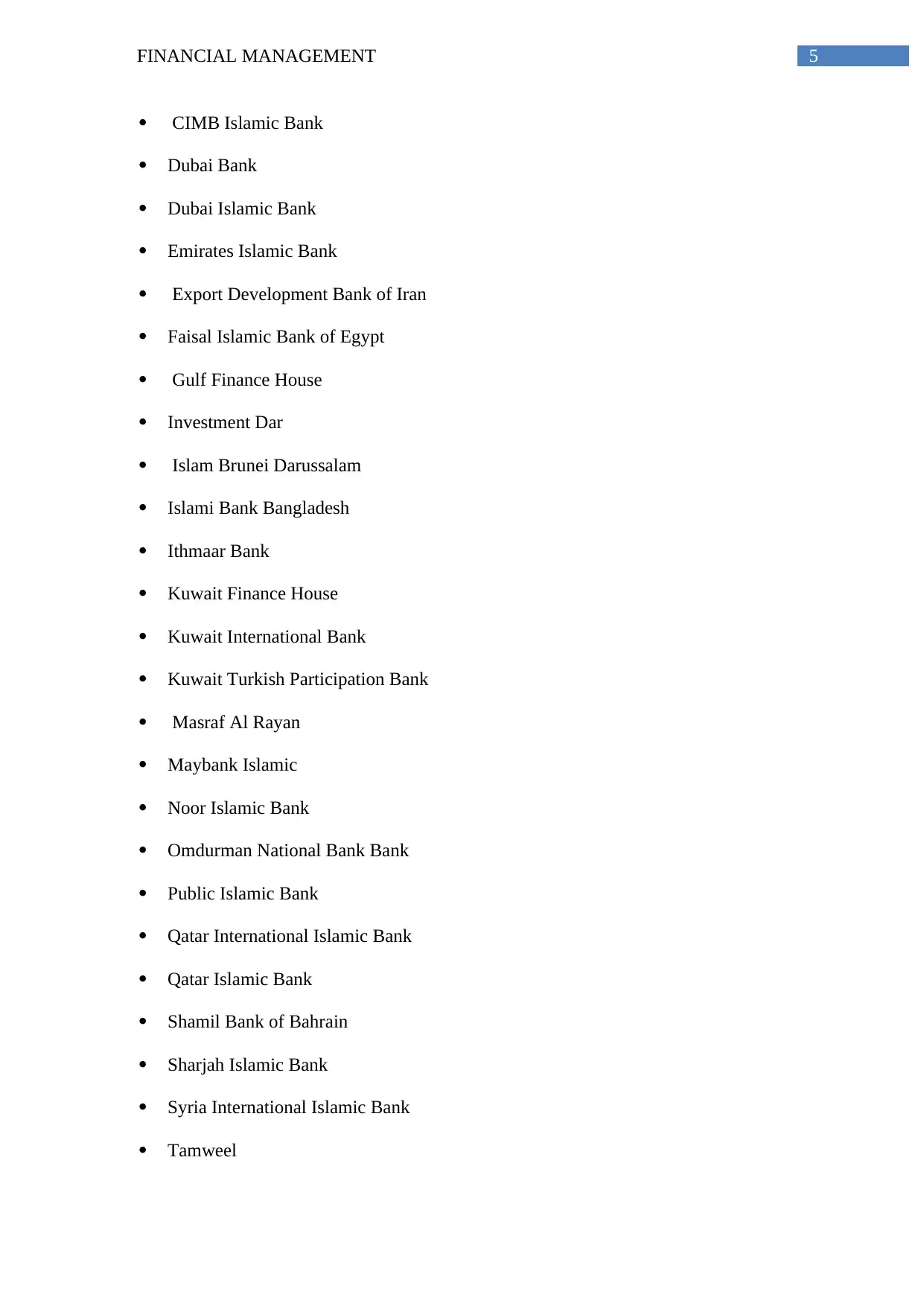
5FINANCIAL MANAGEMENT
CIMB Islamic Bank
Dubai Bank
Dubai Islamic Bank
Emirates Islamic Bank
Export Development Bank of Iran
Faisal Islamic Bank of Egypt
Gulf Finance House
Investment Dar
Islam Brunei Darussalam
Islami Bank Bangladesh
Ithmaar Bank
Kuwait Finance House
Kuwait International Bank
Kuwait Turkish Participation Bank
Masraf Al Rayan
Maybank Islamic
Noor Islamic Bank
Omdurman National Bank Bank
Public Islamic Bank
Qatar International Islamic Bank
Qatar Islamic Bank
Shamil Bank of Bahrain
Sharjah Islamic Bank
Syria International Islamic Bank
Tamweel
CIMB Islamic Bank
Dubai Bank
Dubai Islamic Bank
Emirates Islamic Bank
Export Development Bank of Iran
Faisal Islamic Bank of Egypt
Gulf Finance House
Investment Dar
Islam Brunei Darussalam
Islami Bank Bangladesh
Ithmaar Bank
Kuwait Finance House
Kuwait International Bank
Kuwait Turkish Participation Bank
Masraf Al Rayan
Maybank Islamic
Noor Islamic Bank
Omdurman National Bank Bank
Public Islamic Bank
Qatar International Islamic Bank
Qatar Islamic Bank
Shamil Bank of Bahrain
Sharjah Islamic Bank
Syria International Islamic Bank
Tamweel
⊘ This is a preview!⊘
Do you want full access?
Subscribe today to unlock all pages.

Trusted by 1+ million students worldwide
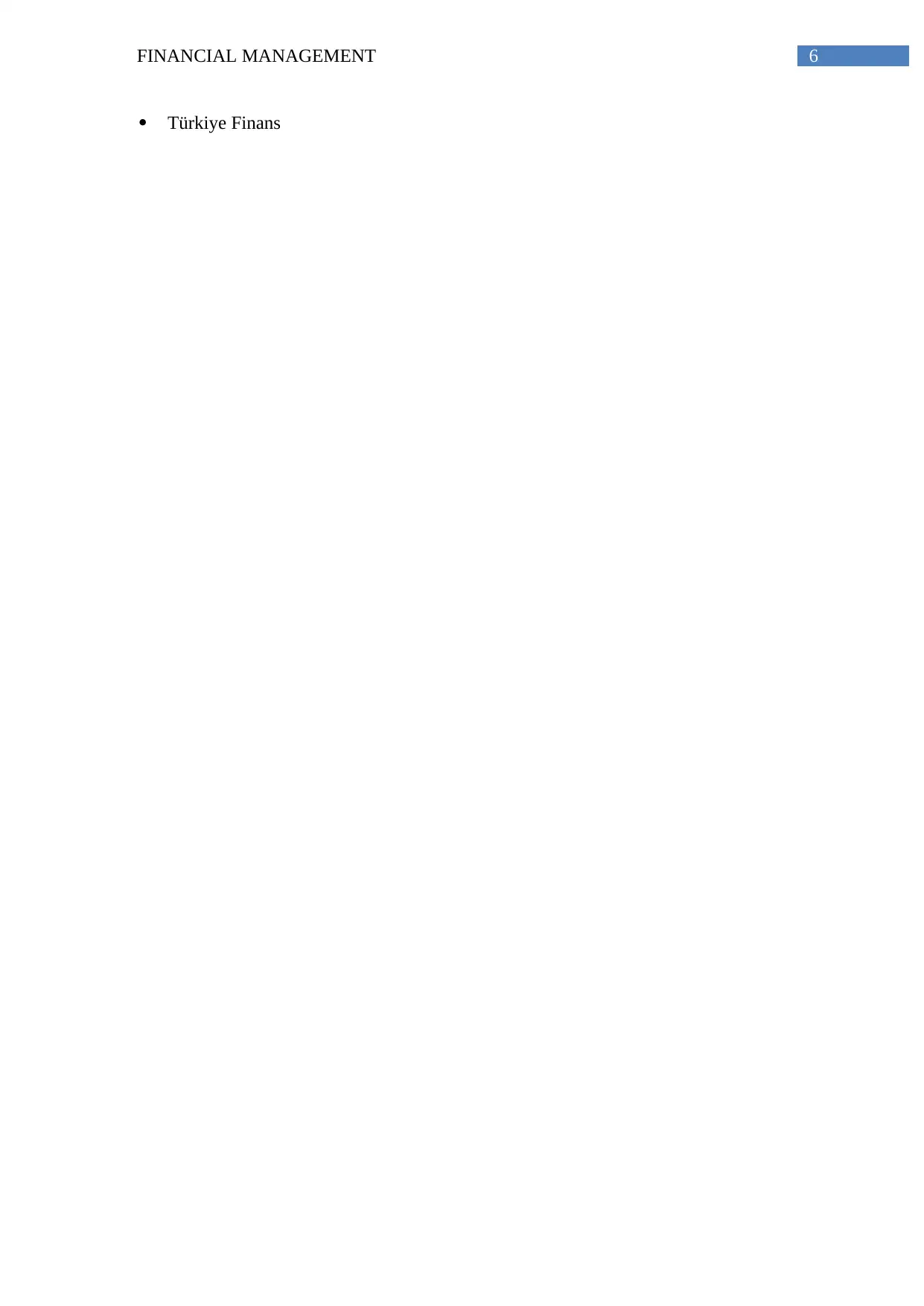
6FINANCIAL MANAGEMENT
Türkiye Finans
Türkiye Finans
Paraphrase This Document
Need a fresh take? Get an instant paraphrase of this document with our AI Paraphraser
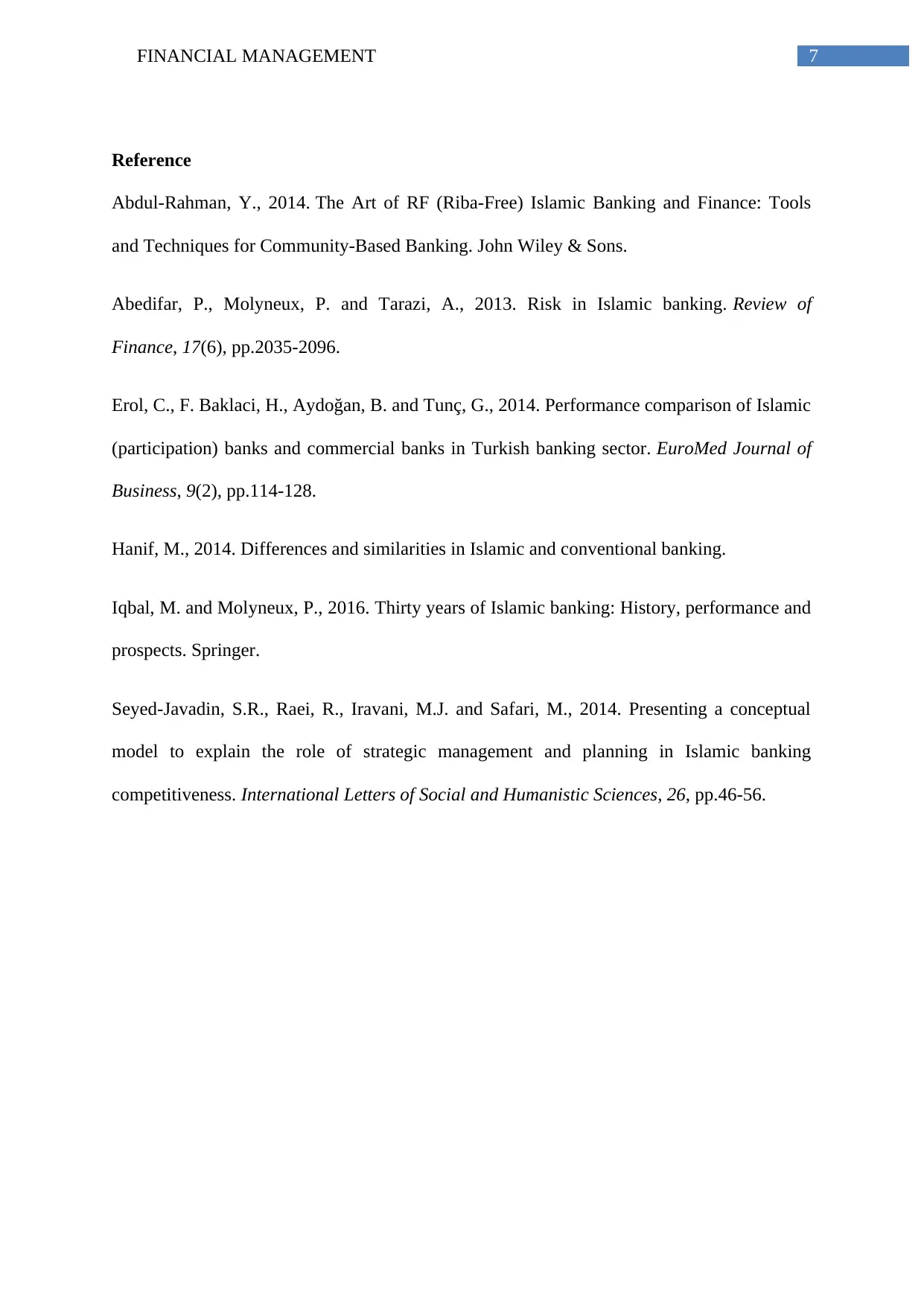
7FINANCIAL MANAGEMENT
Reference
Abdul-Rahman, Y., 2014. The Art of RF (Riba-Free) Islamic Banking and Finance: Tools
and Techniques for Community-Based Banking. John Wiley & Sons.
Abedifar, P., Molyneux, P. and Tarazi, A., 2013. Risk in Islamic banking. Review of
Finance, 17(6), pp.2035-2096.
Erol, C., F. Baklaci, H., Aydoğan, B. and Tunç, G., 2014. Performance comparison of Islamic
(participation) banks and commercial banks in Turkish banking sector. EuroMed Journal of
Business, 9(2), pp.114-128.
Hanif, M., 2014. Differences and similarities in Islamic and conventional banking.
Iqbal, M. and Molyneux, P., 2016. Thirty years of Islamic banking: History, performance and
prospects. Springer.
Seyed-Javadin, S.R., Raei, R., Iravani, M.J. and Safari, M., 2014. Presenting a conceptual
model to explain the role of strategic management and planning in Islamic banking
competitiveness. International Letters of Social and Humanistic Sciences, 26, pp.46-56.
Reference
Abdul-Rahman, Y., 2014. The Art of RF (Riba-Free) Islamic Banking and Finance: Tools
and Techniques for Community-Based Banking. John Wiley & Sons.
Abedifar, P., Molyneux, P. and Tarazi, A., 2013. Risk in Islamic banking. Review of
Finance, 17(6), pp.2035-2096.
Erol, C., F. Baklaci, H., Aydoğan, B. and Tunç, G., 2014. Performance comparison of Islamic
(participation) banks and commercial banks in Turkish banking sector. EuroMed Journal of
Business, 9(2), pp.114-128.
Hanif, M., 2014. Differences and similarities in Islamic and conventional banking.
Iqbal, M. and Molyneux, P., 2016. Thirty years of Islamic banking: History, performance and
prospects. Springer.
Seyed-Javadin, S.R., Raei, R., Iravani, M.J. and Safari, M., 2014. Presenting a conceptual
model to explain the role of strategic management and planning in Islamic banking
competitiveness. International Letters of Social and Humanistic Sciences, 26, pp.46-56.
1 out of 8
Related Documents
Your All-in-One AI-Powered Toolkit for Academic Success.
+13062052269
info@desklib.com
Available 24*7 on WhatsApp / Email
![[object Object]](/_next/static/media/star-bottom.7253800d.svg)
Unlock your academic potential
Copyright © 2020–2025 A2Z Services. All Rights Reserved. Developed and managed by ZUCOL.





